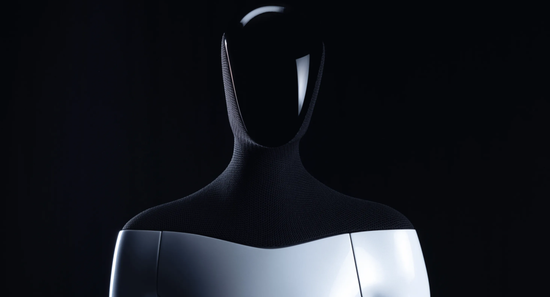
Welcome to the WeChat subscription number of “Sina Technology”: techsina
Text / Zhi Yong
Source: Brocade (ID:jinduan006)
The concept of humanoid robots has been around for a long time. Whether in science fiction or in movies, we can often see wonderful scenes of coexistence and symbiosis between humans and humanoid robots. There’s no one who doesn’t expect humanoid robots from sci-fi movies to become reality.
For a long time, people have often been very excited to hear the news of humanoid robots. No, just on June 3, Musk tweeted that he would announce the humanoid robot “Optimus Prime” at Tesla AI Day on September 30. As soon as the news came out, many A-share robot concept stocks continued to strengthen.
Not only are ordinary investors excited, but institutional researchers are also excited, “I finally see the inflection point.” While writing reports to dismantle the industry chain and estimate the market size, while speaking to the outside world, it is time to re-understand robots.
The popularity of Tesla’s humanoid robot has not subsided. Lei Jun also brought his own humanoid robot – “Cyber One” at the recent new product launch conference. This news directly pushed the domestic humanoid robot to a climax – even Xiaomi also Entering the field of robotics, it seems that the era of humanoid robots is coming. With the ultimate price/performance ratio of Xiaomi, it is estimated that you will be able to place an order on Xiaomi Mall soon.
But the reality is still skinny. In the past decade or two, humanoid robots have always been like 5 years away, and the result is 5 years after 5 years. We have never seen cheap and intelligent humanoid robots.
Even the well-known Boston Dynamics in the industry could not escape the fate of “remarrying” many times. First, it was acquired by Google, and in 2017, it was resold to Japan’s Softbank, and finally it was under the banner of South Korea’s Hyundai Income. A US military-backed company literally turned into a global multinational. In the final analysis, humanoid robots cannot be commercialized in the short term.
The gap between reality and ideal is visible to the naked eye. Therefore, there are also many bears: the small steps of the Xiaomi humanoid robot are slower than that of Grandma Liu, which is not like a product of the same era as the humanoid robot of Boston Dynamics. Besides, others have studied for 30 years without success. This is obviously a hype of new wine in old bottles. For a while, the voices of doubts were endless.
It is said that the concept of the metaverse was also hyped last year. Some people say that the metaverse has come, and some people say that the metaverse is the ultimate form of the Internet, but in fact, even the most basic terminal devices such as VR and AR are still immature. From this level, humanoid robots, like the Metaverse, are still “water without source and wood without roots”.
With the rise in popularity of humanoid robots, the comment area has quickly turned into a battlefield of saliva between long and short parties. It is difficult for the two sides to reach an agreement and argue endlessly. But the quarrel is quarreling. Whenever there is good news, many investors can’t help but rush in. It can be said that “the robot abused me thousands of times, and I treat the robot like my first love.”
In line with the principle of “knowing the truth, knowing the reason”, today we will explore how the future of humanoid robots will be interpreted as a bystander.
01
Why are the giants optimistic about humanoid robots?
1. Humanoid robots have a long history
In addition to the Google, Softbank, Tesla and Xiaomi mentioned in the opening paragraph, Tencent also released a robot product, the quadruped robot Max, some time ago. Why do humanoid robots often get the attention of heroes from all walks of life? Is it a new outlet?
In fact, people have a long history of researching humanoid robots. Over the past hundred years, industry giants have been entering the game. As early as 1927, the Westinghouse Company of the United States built the world’s first humanoid robot “Televox”. Although it could not walk, it could lift the receiver to answer the phone. later:
-
In 1973, Waseda University launched the life-size robot WAROT-1, which was equipped with manipulators, artificial vision and hearing devices.
-
In 2000, Honda launched ASIMO, a humanoid robot that can jump, with 57 degrees of freedom, and was driven by pure electric motors for the first time.
-
In 2013, Boston Dynamics launched a new generation of humanoid robot Atlas, focusing on sports performance.
-
In 2014, Softbank and AR jointly launched the humanoid robot Pepper, and in 2015 began a bold attempt to commercialize it.
-
In 2019, domestic Ubisoft released the second-generation humanoid robot Walker. In addition to 36 high-performance servo joints and a force feedback system, it also has multi-dimensional perceptions such as vision, hearing, and spatial perception.
-
In 2021, the British company Engineered Arts developed the humanoid robot Ameca, which can make lifelike expressions like blinking, thinking, shyness, etc., becoming the robot closest to human facial expressions.
However, it is a pity in the middle that the humanoid robots of Honda and Softbank were discontinued in 2018 and 2021 respectively because they could not be commercialized. Fortunately, new players continued to pour in. In short, the entire humanoid robot industry is timeless, technology is advancing, and at the same time, humanoid robots have more and more functions, and various performances are continuously optimized.
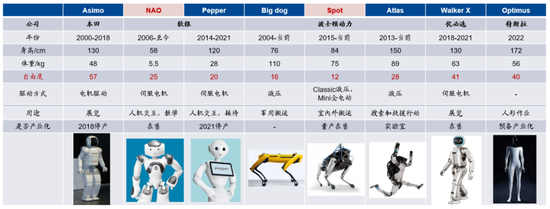 Figure 1: Comparison of product parameters of well-known humanoid robots, data source: company website, GF Securities
Figure 1: Comparison of product parameters of well-known humanoid robots, data source: company website, GF Securities2. Very appealing application prospects
If you were given a humanoid robot, what would you expect it to do for you? Whether cleaning, cooking, or taking care of your baby, you probably want it to be on call 24 hours a day and omnipotent. That is to say, as long as it has the corresponding functions, the application scenarios of humanoid robots are extremely rich.
For example, my country’s population is aging, and the care of the elderly will be a problem that our generation of young people will have to face in the future. It would be perfect if a humanoid robot with considerate and gentle characteristics could do it. After all, a humanoid robot will never say tired, sleepy or sick.
In general, once the ideal humanoid robot becomes a reality, it can not only replace human labor in many industries, but also can well meet people’s emotional communication, nursing and other family needs. There is no doubt that this will be a brand new ten trillion market.
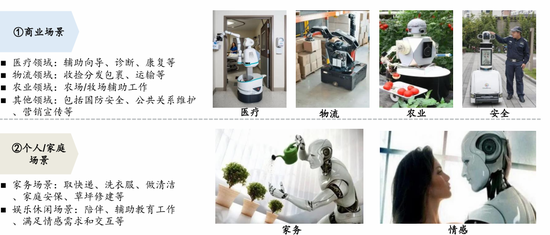
Figure 2: Some application scenarios of humanoid robots, source: Statista, Soochow Securities
02
The real status quo beneath the hustle and bustle
1. Technology still needs to break through
The future of humanoid robots is beautiful and sexy, but back to reality, we have to face the skinny side.
In the past few decades, the progress of humanoid robots has been more reflected in the movement performance. You have to admire the extreme motion control performance of the Boston Dynamics humanoid robot. But if you want to let it chat with you and go shopping, obviously you can’t do it. Although the similarity in appearance is getting higher and higher, compared with the ability of human beings, the gap can be described as the difference between clouds and mud.
When it comes to the status quo of humanoid robots in my country, due to the relatively late start and the blockade of related technologies, there is naturally a gap that can be seen and felt in terms of comprehensive performance. At present, Boston Dynamics humanoid robots already have parkour movements such as backflips and mid-air jumps, while many domestic humanoid robots are still in the toddler stage.
Different from industrial robots, humanoid robots can be said to be the most advanced form of robots. They not only require extreme athletic ability, but also excellent interaction and perception capabilities. In other words, humanoid robots do not simply translate the technology on industrial robots, but require deep integration and iterative upgrades of software and hardware capabilities.
Let’s talk about hardware first. Humanoids mainly include controllers, motors, reducers, batteries, etc. At present, the difficulties of the whole industry lie in the design of the motor system of the core joints and the lightweight of materials.
As one of the core components of humanoid robots, servo motors are mainly dominated by overseas companies. In the past three years, Japanese manufacturers such as Yaskawa, Panasonic, and Mitsubishi have occupied nearly 50% of the domestic market. Although low-end servo motors with small and medium power have been localized, high-end servo motors still need to break through key technologies. At present, the leading domestic manufacturers such as Inovance Technology (SZ: 300124) and Hechuan Technology (SH: 688320) are attacking the high-end market and promoting the localization of servo motors.
The second is the reducer. Due to the late start of domestic research and development, there is a gap with foreign companies in terms of speed, transmission accuracy and stability. In the early years, the domestic harmonic reducer was monopolized by overseas enterprises. Domestic Green Harmonic (SH: 688017) became the first enterprise to break the monopoly of overseas technology. Under the background of domestic substitution, Chinese enterprises are speeding up to catch up.
In addition, in terms of controllers, sensors and battery systems, China has certain advantages with a complete industrial chain. (Note: For the analysis of the industry chain, subsequent articles will be introduced separately)
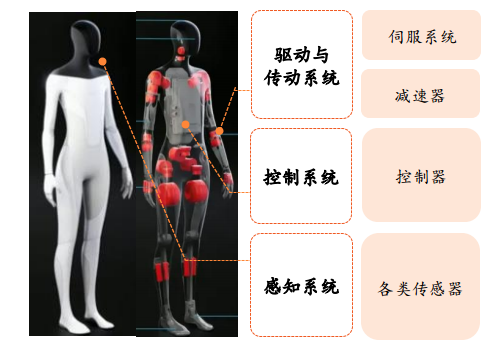 Figure 3: Core components of humanoid robots, Source: “Research and Development of China’s Strategic Emerging Industries: Industrial Robots”, Ping An Securities
Figure 3: Core components of humanoid robots, Source: “Research and Development of China’s Strategic Emerging Industries: Industrial Robots”, Ping An SecuritiesLet’s talk about soft skills. my country is basically in the same echelon as the developed countries in the world in terms of artificial intelligence technology, especially in the fields of cloud computing, image recognition, speech recognition and other technologies, the gap with the world’s leading level is not large. However, the current situation of the industry that has to be faced is that for a long time in the past, the technological progress of humanoid robots in human-computer interaction, link perception, self-decision, etc. is still lower than the public’s expectations.
Now human-computer interaction technology can only accept fixed commands and programs before, and now it has been greatly improved through a large number of deep learning and image and voice training. For example, humanoid robots can more accurately complete image recognition and speech and semantic analysis in different scenarios. However, if humanoid robots can solve various problems through deep learning, and have emotions such as joy, anger, sorrow and joy like humans, I am afraid that it is still a difficult problem that cannot be solved for a while.
Next, in order for humanoid robots to deal directly with people, especially to meet the needs of escort, it is necessary to have strong human-computer interaction and perception capabilities. But for things like emotions, humans themselves have not yet fully controlled, so the attempt to put perception capabilities on humanoid robots is actually quite difficult.
In short, we don’t want to create a programmed robot that does what is ordered and can only achieve a specific purpose, but a humanoid robot that can think like a human and can perceive the outside world. Mature hardware is only part of it, and powerful AI capabilities require continuous iteration and optimization, which obviously cannot be achieved overnight.
2. Cost constraints – what if they were built?
Creating a humanoid robot with both motion performance and interactive capabilities is only the first step. We also have to reduce the cost of humanoid robots to a price that is close to the people.
Not to mention that the current humanoid robot talismans are not in line with the public’s preferences, and the price alone will shut out the vast majority of consumers. At that time, the cost of a single unit of Japan’s Honda ASIMO and Boston Dynamics Atlas was as high as 3 million and 1.9 million US dollars respectively. Even Xiaomi’s “low-profile” humanoid robot costs as high as 600,000 to 700,000. How can such a high price allow humanoid robots to enter the homes of ordinary people? Like the logic of the auto industry a hundred years ago, humanoid robots can’t just be toys for the rich.
In addition, although some humanoid robots on the market can already perform simple and repetitive tasks such as moving boxes, they can actually be used in logistics and other industries from a practical point of view, but the high price of humanoid robots is difficult to achieve artificial replacement value.
It is precisely because of the huge gap between reality and ideals that the war of words between bears and bulls is also escalating, and the two sides can be described as incompatible.
03
How do you see the road ahead?
1. The battle between long and short sides
Investors who are optimistic about humanoid robots are convinced that the commercialization of humanoid robots is coming soon. This is not just a story, but also subverts the entire social operating system.
First, Internet giants, consumer electronics companies, and technology companies have all entered the industry. I believe Xiaomi will not be the last company to announce its entry into military-shaped robots. With the efforts of major players, the advent of humanoid robots is just around the corner.
Second, the fact that Iron Man Musk has entered the scene shows that this is very interesting. The rocket recycling and electric vehicles that Musk proposed at the beginning were also impossible at first glance, but they have now been realized. Therefore, the market believes that Musk’s humanoid robot can also succeed.
Third, humanoid robots are now supported by high-precision sensors and algorithms in voice recognition and image recognition, and have far surpassed the human level in terms of recognition speed and accuracy. By analogy, humanoid robots may also have five senses in the future. It is only a matter of time before humanoid robots become highly intelligent.
At the same time, the bears do not let go too much: humanoid robots have been developed for decades without qualitative breakthroughs. Humans have already landed on the moon, and the next step is to go to Mars. The commercialization of humanoid robots may have to wait for a while. Thirty years.
First of all, the hardware technology of humanoid robots is still immature, not to mention the more difficult AI skills. Boston Dynamics has been researching for more than 30 years. Although its humanoid robots continue to show many cool skills, why not show us life application scenarios, obviously they can’t do it. Some netizens even ridiculed that if the humanoid robot is out of power, can the 5th Nanfu battery be replaced?
Second, human beings have the ability to draw inferences from one example, and what is learned in one field can be applied to other fields. Although the AI in full swing has been making rapid progress, there is still a full range of differences from the precise human brain. For example, in the field of autonomous driving, it is often impossible to recognize a tricycle, not to mention that AI power consumption is still very large.
In our opinion, both sides’ views are reasonable and are based on linear extrapolation of partial facts, but in fact, there is no point in arguing, and it is better to move two more bricks. What the author wants to say is, can we jump out of the fixed thinking trap of each family?
Of course, we do not mean to deny the meaning and function of linear thinking, but to say that sometimes linear thinking is like an anchor sinking into the sea, fixing your thinking somewhere, which is the so-called “anchor effect”. When looking at the future trend of humanoid robots, we need to get rid of the confusion of the anchoring effect.
2. Who will redefine humanoid robots?
First of all, let’s review an epoch-making product – the Apple mobile phone.
I believe that many people think that Jobs is an innovative genius who created the era of smart machines. In fact, Jobs’ products are not as “new” as everyone thinks. Before the release of the Apple phone, Nokia, the dominant mobile phone world at the time, had launched touch-screen phones, and BlackBerry had also sparked a short-lived smartphone boom. So why did the long-arrived Apple mobile phone usher in the era of smartphones?
In our opinion, Jobs is actually a top product manager who redefines a phone according to his own ideas. At that time, digital music players, touch-screen mobile phones, digital cameras, etc., were all mature products; none of the technologies such as multi-touch, virtual keyboard, and glass screen were originals of Apple. But it was Jobs, who had a big brain hole, who subtly combined three separate devices and technologies that everyone could not think of to use into one Apple mobile phone, which eventually became a cross-generational product that was passed down by word of mouth.
Obama once spoke highly of Jobs, “He changed our lives, redefines the entire industry, and changed the way each of us sees the world.”
Just imagine, if Steve Jobs made Apple mobile phones according to the traditional way of making mobile phones, would he be able to compete with giants such as Nokia and Samsung. In fact, the feature phones, smartphones and iPhones of the year were not the same product at all. Like we’re all talking about “software-defined cars” right now. In the past 100 years, we have always regarded the car as one of the means of transportation, and today’s smart electric vehicle is no longer a simple means of transportation, it is more like a smartphone with wheels or a mobile third space in the home, etc. In the scene, the actors have different identities.
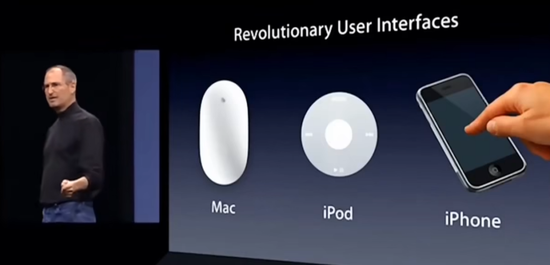
Ten years ago, everyone thought that electric vehicles were too expensive and had low battery life. How could they compare with the fuel vehicles that have accumulated over a century? As a result, electric vehicles have now entered thousands of households. When the buttons on mobile phones were canceled, everyone was worried about how to type in the future. Woolen cloth. As a result, you can now play League of Legends. Although people’s doubts about electric vehicles have disappeared, the thinking mode of analogical reasoning and linear extrapolation that everyone is accustomed to using the familiar historical evolution process has always been there.
If the future is just to follow the original path to make humanoid robots, even if new industry giants enter, the author is more willing to stand on the side of the bears; but if there are constantly companies redefining humanoid robots, then readers think that they can be cautiously optimistic .
3. Take advantage of the “Dongfeng” and talk about it
Returning to the commercialization level, humanoid robots are still in the process of going from 0 to 1. Just like the electric vehicle in 2011, it faces many problems such as low battery life, slow charging, short lifespan, and high price.
With the development of artificial intelligence, big data, cloud computing and other technologies, as well as the continuous maturity of intelligent technologies such as image recognition, natural language processing, and deep learning, there is a better environment for the development of humanoid robots. Autonomous driving algorithms, AI face recognition, voice recognition, AI chips, battery systems, and thermal management systems in other fields can all be applied to humanoid robots. Or we can change our thinking. To borrow the words of Mr. Lu Xun, we must use our brains, show our eyes, and get it ourselves! No matter the thirty-seven-twenty-one, bring it!
For example, when Boston Dynamics launched the first-generation humanoid robot Atlas in 2013, due to the immature lithium battery technology, cables were needed for power supply. In the second-generation Atlas in 2016, an independent lithium battery was used to separate the robot. cable restraint. At the same time, with the advancement of semiconductor technology, the power consumption of the chip has been greatly reduced under the same computing power, which means that the working time of the humanoid robot will be prolonged.
Secondly, the competitive atmosphere of chasing each other and giving in to each other brought about by the joining of more companies has promoted the accelerated development of technology, which can realize a two-way feedback loop. And if Tesla, Apple, Tencent, Xiaomi and other companies with their own brand benefits can take the lead in commercialization, the cost reduction brought by their large-scale mass production is also worth looking forward to.
The most exciting thing about the technology industry is that there are always epoch-making products that you didn’t know about. As for whether the humanoid robot is the most beautiful fantasy or a product that changes human beings, the most important thing at present is how to define it.

(Disclaimer: This article only represents the author’s point of view and does not represent the position of Sina.com.)
This article is reproduced from: http://finance.sina.com.cn/tech/csj/2022-08-19/doc-imizmscv6823765.shtml
This site is for inclusion only, and the copyright belongs to the original author.